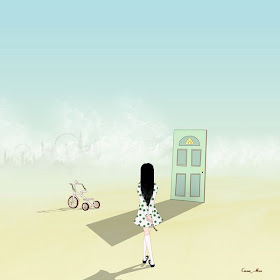
Art is the process or product of deliberately arranging elements in a way to affect the senses or emotions.
HOME
▼
Monday, July 20, 2009
DIGITAL ART_ By LimKis
Masha Gubar (AKA Limkis) is a talented digital artist from Russia। Her painterly style of vector illustrations are like poetry in visual form। Her vivid artworks are the indicators of what immense possibilities vector illustrations and programs like Adobe Illustrator are capable of.


Sunday, July 19, 2009
Pencil shading work-----Created by Radha Rani
 A shading network is a collection of connected rendering nodes that defines how colors and textures contribute (usually with lights) to the final look of surfaces (materials). A shading network typically consists of any number of connected rendering nodes plugged into a shading group node. (For more information about render nodes.A good portion of your time building shading networks is spent connecting node attributes to each other and adjusting node attributes to describe what a surface should look like and how it should be positioned।
A shading network is a collection of connected rendering nodes that defines how colors and textures contribute (usually with lights) to the final look of surfaces (materials). A shading network typically consists of any number of connected rendering nodes plugged into a shading group node. (For more information about render nodes.A good portion of your time building shading networks is spent connecting node attributes to each other and adjusting node attributes to describe what a surface should look like and how it should be positioned।The first step to successful pencil shading is to control the movement of your pencil, making sure that every mark you make on the paper works towards creating the shading or modeling effect that you want। The following pages offer a few tips to get you started। To begin with, decide whether you want to use the point or side of the pencil to shade with.
Oil Pastels work-----Created by Radha Rani
 The artist can draw with oil pastels as with crayons.They can also be used as paint in formal paintings or to touch up oil paintings.
The artist can draw with oil pastels as with crayons.They can also be used as paint in formal paintings or to touch up oil paintings.Oil pastel (also called wax oil crayon) is a painting and drawing medium with characteristics similar to pastels and wax crayons. Unlike "soft" or "French" pastel sticks, which are made with a gum or methyl cellulose binder, oil pastels consist of pigment mixed with a non-drying oil and wax binder. The surface of an oil pastel painting is therefore less powdery, but more difficult to protect with a fixative.





















































